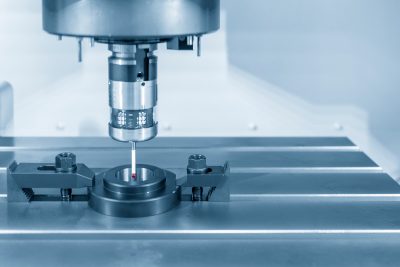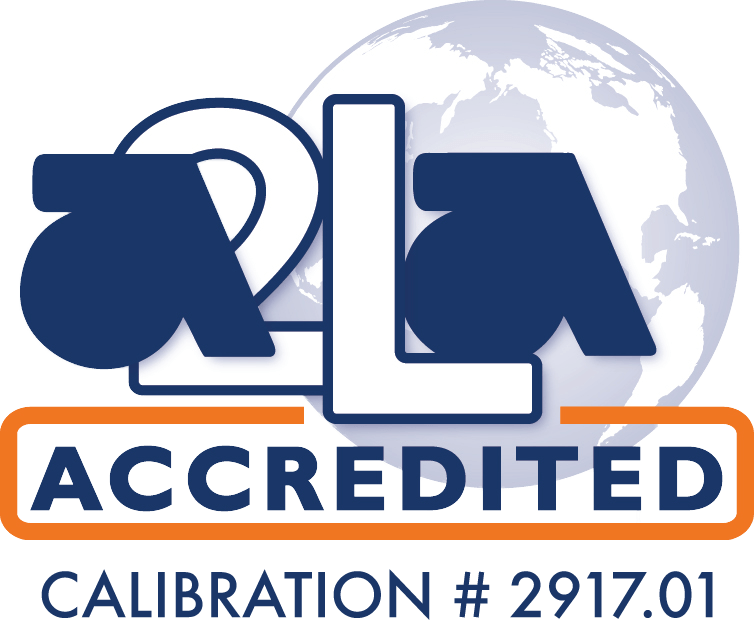
When a gage comes to you from the factory, it has already received calibration to align with published standards. You can generally be sure it will operate with the accuracy and precision your applications require.
After some time, though, you may suspect your device isn’t performing to the level it once did. Or even if it’s performing admirably but significant time has elapsed since you began using it, it may still require recalibration.
How often should you calibrate gages? The answer is likely to depend on several different factors.
Table of Contents
- The Importance of Gage Calibration
- Calibration Frequency Standards
- How Often Various Equipment Needs to Be Calibrated
- Work With MicronPA for Fast, Dependable Calibration

The Importance of Gage Calibration
Why is calibrating gages so important? Proper, frequent calibration enables your device to maintain the consistency and performance necessary for producing superior parts. Here are a few of the benefits of adequate gage recalibration:
- Quality control: Without the right calibration, gages cannot maintain optimal performance. Frequent calibration helps these instruments maintain the consistency and superior performance manufacturers depend on for their reputations and livelihoods.
- Safety: Using poorly calibrated gages can compromise safety. In the aerospace industry, for instance, where even a minuscule deviation could put air passengers at risk, proper calibration is mission-critical for preventing catastrophic accidents.
- Profit protection: A poorly calibrated gage may produce unusable parts. If the manufactured components deviate from standard requirements, your facility may have to throw them away rather than risk performance and safety concerns.
- Avoiding penalties: Facilities with poorly calibrated gages may produce substandard products, run afoul of regulations and incur stiff fines and other penalties. A governing agency like the U.S. Food and Drug Administration (FDA) may also require calibration at specific intervals, as with pharmaceutical equipment. You can remain in compliance and avoid these penalties by recalibrating your gages often.
Calibration Frequency Standards
In some industries, gages may require calibration only about once every year. In many other industries, though, more regular calibration is essential. In industries like the aerospace, automotive, defense, medical and pharmaceutical industries, instruments will likely require more frequent calibration to ensure product quality control and safety.
What are some of the considerations that determine gage calibration frequency? Below are a few of the most common factors:
- Manufacturer’s standards: Many equipment manufacturers indicate how often their gages will require calibration. If you know these standards for your gages, adhering to them allows you to get the most out of your equipment.
- Frequency of use: How often you use your gages will also determine how much calibration they require. If you use your gages regularly, they will undergo more calibration shifts and drifts and require more frequent recalibration. If you use your gages only intermittently, you can probably go longer between calibrations without seeing any performance drop-off.
- Environmental conditions: Some environments are harder on your gages than others. Locations subject to humidity and temperature extremes or fluctuations, excessive vibrations, or electrical and mechanical shocks will likely need to calibrate their gages more often to ensure consistent performance.
- Calibration tolerances: In some applications, very little deviation is permissible between the calibrated device’s performance and the known standard. Where extremely tight tolerances are necessary, more frequent calibration may be necessary as well.
How Often Various Equipment Needs to Be Calibrated
Under the ISO/IEC 17025:2017 standard, laboratories like MicronPA may not recommend specific calibration intervals unless we have agreed on a schedule with a particular customer. Once the device has left the lab, its operational conditions may differ substantially from the lab conditions, so any predicted calibration frequency may require adjustment.
However, various types of equipment will have different calibration requirements in general. We’ll touch on just a few of those below.
1. Multimeters
Multimeters require regular calibration for consistent performance. A multimeter can measure electrical voltage, current, resistance and other values consistently only if it operates within certain environmental parameters. Operation in excessive or fluctuating heat and humidity can cause its readings to drift out of tolerance. Additionally, in the electronics industry, exposure to electric shock is a common risk. Particularly if a facility suspects its instruments have been subject to heavy environmental stresses, it will need to recalibrate its multimeters relatively frequently.
2. Weights
Weights also require regular calibration for consistent performance. The weights used in precision balances and scales, for instance, receive initial calibration to ensure correct, reliable measurements. Over time, however, their performance may drift and cause diminished measurement accuracy and precision. One useful practice is for facilities to keep a log of recalibrations and the amount of drift recorded during each procedure. This data can help determine how often future recalibrations need to occur.
3. Meters
Meters usually receive initial calibration from the manufacturer, but over time, heavy use and challenging field conditions may cause the meter’s performance to drift out of the published accuracy range. A suspected drift in performance accuracy, especially in the aftermath of severe environmental exposure, is often enough to warrant a recalibration.

4. Pressure Gauges
The calibration of your pressure gauge is critical to its dependable performance. The precision of pressure gauge readings gives operators the peace of mind of knowing the fluid pressure measurements for hydraulic systems are reliable. Accurate setup and tuning of fluid power machines, for instance, requires precise, accurate pressure gauges in good working order.
Pressure gauge readings may drift from the accepted standard for many reasons. Changing conditions inside a facility, external weather conditions or extensive use may cause the readings to shift. If operators suspect drift for these reasons, or if significant time has passed since the last calibration, a recalibration may be necessary for reliability and peace of mind.
5. Accelerometers
Precision and accuracy are highly critical in accelerometer performance. Even slight deviations from the published standard can cause performance discrepancies.
Because of these instruments’ use in vibration measurements, accelerometer accuracy is particularly susceptible to shift because of environmental conditions. The harsh impacts in crash testing, the vibrations encountered in machine monitoring and the pressures associated with sonar can all cause drift. After exposure to conditions like these, or after an extended time after calibration, recalibration often becomes necessary.
Work With MicronPA for Fast, Dependable Calibration
When you need reliable gage calibration services, partner with MicronPA.
We can act as a one-stop shop for all your calibration needs, providing on-site calibration and fast turnaround times, often within a week or sooner. We are happy to provide a free quote as well so you can figure out what’s right for your budget before proceeding.
Our trusted experts have the sophisticated tools and the years of industry knowledge and expertise to return your instruments to reliable operation. And our friendly customer service experts are always ready to provide direct, helpful information or talk you through a unique calibration issue.
Contact us today to schedule gage calibration services at our full-service York, Pennsylvania, lab!




